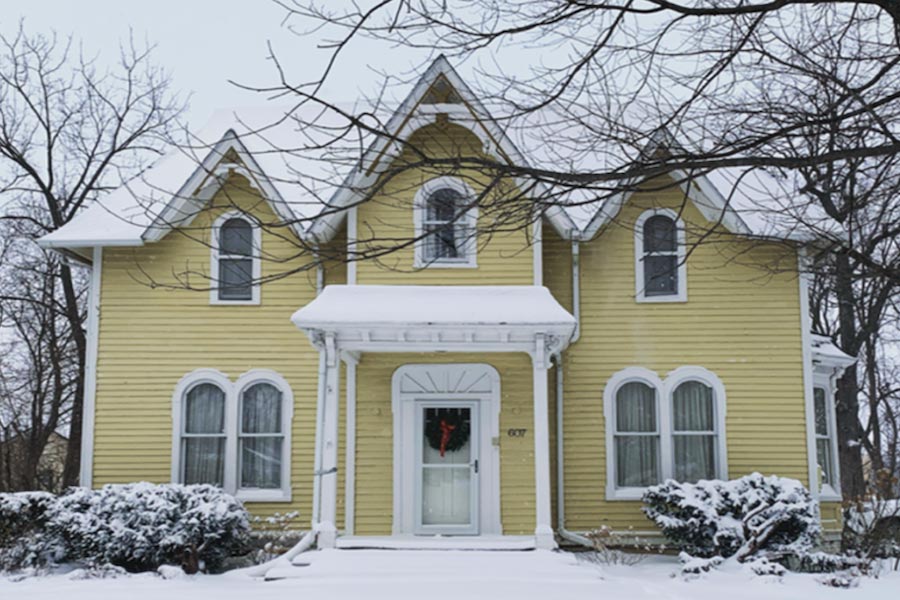Sep 14, 2021
Which States Have the Greatest Need for Infrastructure Renewal?
President Biden's $1 trillion infrastructure bill aims to improve the country's aging and ailing infrastructure, creating millions of new positions. West Virginia, Louisiana, Michigan, and Mississippi are the states that have the greatest need for infrastructure renewal, with poor road conditions, bridges, and inadequate access to high-speed internet. The impact of the COVID-19 pandemic has only worsened existing infrastructure concerns across the US.
By: Evelyn Long

President Biden and many U.S. Representatives and Senators are currently focusing their attention on an infrastructure bill. A $1 trillion bill was passed in the Senate on September 9, with more negotiations to come from the House. Proponents of the plan hope to create millions of new positions and provide the funding necessary to improve the country’s aging and ailing infrastructure.
The focus on infrastructure renewal has generated much conversation about the state of deterioration states are facing across the nation. The White House recently released a state-by-state fact sheet, grading each one on its infrastructure.
These fact sheets provide a birds-eye view of the potential good new construction and performance innovations can have for our roads, homes, and access to essentials. Here are the states that have the greatest need for infrastructure renewal.
West Virginia
West Virginia scored a D on its most recent infrastructure report card. Much of this is due to the 3,200 miles of highway and 1,545 bridges within the state that are in poor condition and in need of repair. This has also caused commute times in the state to increase by 6.4%.
Outside of transportation, the state’s water infrastructure will require $1.4 billion to ensure drinking water remains safe to consume. In addition, more than one-quarter of West Virginia’s population lives in areas where high-speed internet isn’t accessible. Low-income families are often burdened by high rent and home energy costs.
Mitigating the poor performance of aging homes and buildings will be critical for both energy efficiency and affordability in years to come. Funding that focuses on helping West Virginian homeowners reduce energy costs and trains workers on green techniques will help boost the infrastructure market in a state that once relied heavily on coal production.
Louisiana

Louisiana is one of many Gulf Coast states that has experienced a growing number of extreme weather events over the last decade, costing more than $50 billion in damages. It is also home to 3,411 miles of highway and 1,634 bridges that are in poor condition and in need of repair.
The state will also need an additional $7.3 billion in funds to improve its water infrastructure. Around 14% of the state lives in areas with no high-speed internet, and more than 60% only have access to one broadband provider.
Michigan
Michigan is one of a handful of states to receive a D+ rating on its infrastructure report card, which puts it above West Virginia and Delaware—but not by much. This state has 7,300 miles of highway and 1,219 bridges, all rated in poor condition. Commute times have increased by 4.6%.
Michigan has better rural infrastructure than other states on this list. with only 8.9% of its population living in areas without access to high-speed internet. However, there are other sectors, such as housing, that are struggling more—the housing market in particular. More than half a million renters pay more than 30% of their monthly income into living expenses.
Mississippi
Mississippi is another Gulf Coast state that has experienced a growing number of extreme weather events, most related to climate change, over the last decade. This has resulted in more than $10 billion in damages. There are also upwards of 5,840 miles of highway and 1,386 bridges that need repair, causing the state’s D+ rating on the most recent infrastructure report card.
Broadband is lacking for more than one-quarter of the state’s residents who lack access to high-speed internet, and around half of them only have access to one internet provider. In many regions, even those that offer multiple options for providers, the service is too expensive. Therefore, 23% of households don’t have any Internet access whatsoever.
New Jersey

Nearly one-third of New Jersey residents live in areas with only one broadband provider to choose from, and 10% of households don’t have access to the internet at all. New Jersey also earned a D+ during its most recent infrastructure report card. More than 3,995 miles of highway and 502 bridges are in poor condition. Outside of transportation, the state’s water infrastructure will take an additional $8.6 billion to upgrade. This will also open up all sorts of new jobs and opportunities for residents.
What’s Behind Infrastructure Challenges?
Infrastructure has been falling behind in the U.S. for a variety of reasons. First, roads, power lines, and other projects constructed in the infrastructure boom of the 1930s and 40s have reached the end of their lifespan by the 2000s. In such a large country, both geographically and demographically, it’s challenging to keep up with vast amounts of aging infrastructure without steady reinvestment.
Secondly, economic and population growth has taken place unevenly across the United States in recent decades. Income inequality in states like Mississippi and Louisiana is among the highest in the nation. States struggle to invest in infrastructure improvements when challenged with budget limitations, socioeconomic concerns, and the need to recover from seasonal natural disasters such as hurricanes, flooding, and other severe weather conditions.
Finally, the impact of the coronavirus pandemic has only exacerbated existing infrastructure concerns. More construction was stalled as nonessential operations were halted in many states for health and safety this past year. Now, many construction firms and contractors are facing backlogs stemming from material shortages, labor shortages, and high demand for their services.
Infrastructure Renewal Needs Across the US
This isn’t an exhaustive list by any means. There is a lot of information in these fact sheets, but the primary point is the same with each: There is a lot of work to be done to fix these problems and improve each state’s ability to support residents into the future.
In the long run, this will help to better support the country’s growing population. It will help create new jobs and support the economy moving forward.





